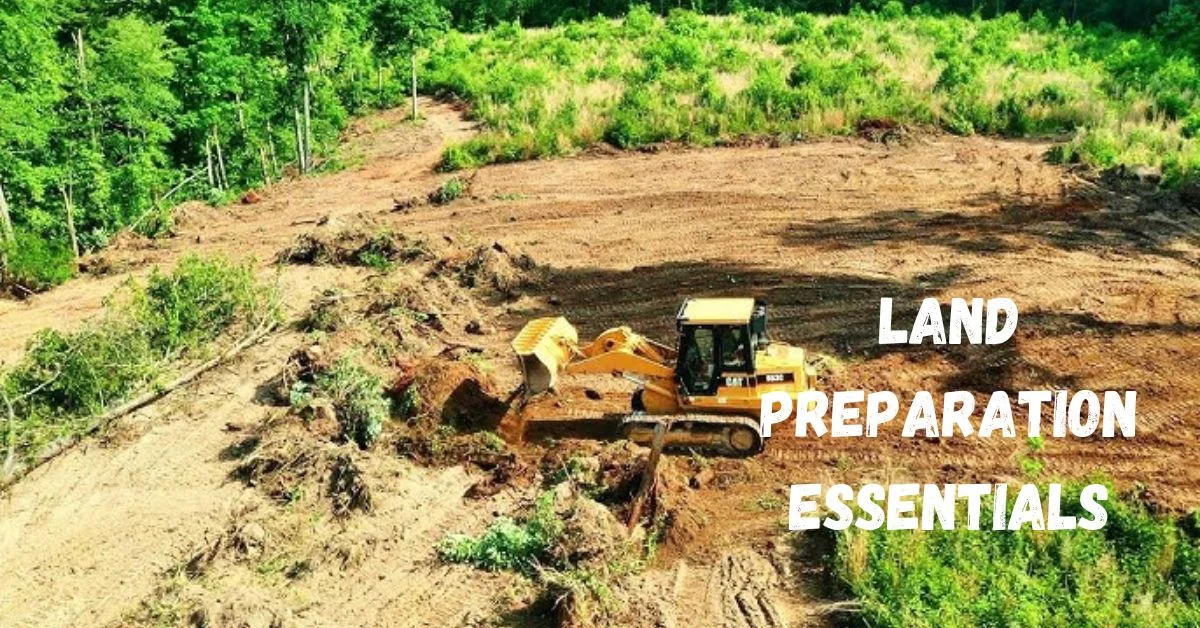Land preparation and clearing are essential in agricultural development, real estate construction, and forestry management since these take in the foundation. In Horry County, the items mentioned here are more important to the unique landform and surroundings to be handled. The blog shall serve as a guide to the farmers, developers of land, and environmentalists on the fundamentals of land preparation, navigation of the legal landscape, adoption of sustainable clearing methods, and leveraging of technology for effective land clearing in Horry County.
Understanding Land Clearing
The main concept of clearing the land is the elimination of natural obstacles, including trees, stumps, bushes, and stones, from the plot of land. There are a variety of motives behind such undertakings, ranging from preparing the land for agricultural activity to building sites. But at the same time, we have to cut down in such a way that preserves the environmental impact as much as possible, prevents the destruction of local ecosystems, and follows sustainable practices.
The Legal Landscape
Like South Carolina, Horry County generally has its own laws for land-clearing actions. Such zonal regulations are meant to harmonize environmental protection and controlled development. Before starting any clearing project, you will need to research and understand the permits needed and the state laws that may affect your plans. Work with the local authority. This will help you to achieve clarity and keep the project in compliance with the law.
Land Clearing Methods
- Manual Clearing
- Pros: Firstly, this method stands out for its precision and minimal disturbance to the surrounding environment, making it particularly suited for sensitive areas. Additionally, by employing hand tools, workers can meticulously remove vegetation, thus preserving the land’s integrity.
- Cons: However, it necessitates a substantial amount of human labor, which can be physically taxing and time-consuming. Consequently, this approach is not efficient for clearing vast areas of land, limiting its applicability to smaller, more manageable projects.
- Mechanical Clearing
- Pros: Utilizing heavy machinery like bulldozers and excavators, this method is effective for quickly clearing large plots of land. It’s especially suitable for projects where time and scale are critical factors.
- Cons: The downside is the potential for substantial environmental damage. Mechanical clearing may cause soil compaction, reducing fertility and harming local ecosystems through habitat destruction and heightened erosion risks.
- Chemical Clearing
- Pros: This method involves spraying herbicides to kill unwanted vegetation. It can target specific types of plants and reduce the need for physical labor in hard-to-reach areas.
- Cons: Chemical clearing carries the risk of environmental contamination. Herbicides can leach into the soil and waterways, harming non-target species and possibly affecting human optimal health. The ecological balance can also suffer, as chemicals may kill beneficial plants along with the intended targets.
Preparing for Land Clearing in Horry County
Planning is vital for a successful land-clearing project. First, closely examine your land to learn about its topography, soil type, and existing ecosystems. Designating zones for conservation, like aged trees or wetlands, is beneficial to ecological stability. In addition, the involvement of professionals for land assessment and clearing also provides an efficient outcome that is environmentally friendly.
Best Practices for Sustainable Land Clearing
Sustainable land clearing is not only a justice to the regulations but also a vow of the environment in our local area. Soil erosion prevention, water protection, and habitat of wildlife conservation are needed first and foremost. Recycling plant extraction, especially making chippings for mulch or new habitats, helps mitigate the environmental impact of clearing land. This practice contributes to the development of a healthier ecosystem by repurposing plant waste.
The Role of Technology in Land Clearing
In the limelight of the technological transformation of land clearing, operations are becoming more accurate and environmentally friendly. Initially, exact boundaries introduced by digital cartography and GPS positioning help in avoiding scarce damage. As a result, it makes sure that the adjacent ecosystems remain properly protected. Meanwhile, automated machines contribute to the process by lowering the volume of the disturbed ground and improving its quality by limiting the root damage. It is a technique that maintains intact the condition of the soil as well as contributes to the faster rehabilitation and growth of the land. Hence, these innovations help to enhance the overall sustainability of the land management systems.
For a deeper exploration into the intricacies of land clearing, sustainable practices, and navigating the legal framework in Horry County, Visit here for related posts. Delve into detailed case studies, interviews with local experts, and up-to-date advice on adhering to environmental regulations while achieving your land development goals.
Conclusion
Sustainable land clearing in Horry County is not only about clearing the way; it also involves taking care of the environment, following the legal regulations, and preserving the community’s value. With meticulous input, proper planning, and relevant equipment, landscaping of today can be managed to avoid trade-offs in the health of lands as we plan for the future.
Our readers are welcomed to take part in the discussion by sharing their experiences of land clearing in Horry County, challenges as well as victories. Your ideas can be the source of a more aware and responsible community that is able to deal with land development of the future effectively.
Also Read: Boliana: The Versatile Wonder of Bamboo

